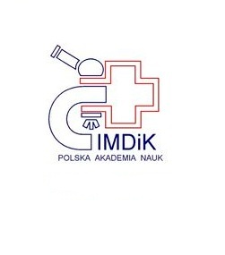- Search in all Repository
- Literature and maps
- Archeology
- Mills database
- Natural sciences
Advanced search
Advanced search
Advanced search
Advanced search
Advanced search

Object
Title: Opportunistic infections of the central nervous system in the course of acquired immune deficiency syndrome (AIDS). Morphological analysis of 172 cases
Creator:
Zelman, Irmina Barbara (1927–2010) ; Mossakowski, Mirosław Jan (1929–2001)
Date issued/created:
Resource type:
Subtitle:
Publisher:
Place of publishing:
Type of object:
Abstract:
A neuropathological analysis of 172 cases of AIDS in adults was carried out, to determine the occurrence and nature ofthe opportunistic infections of the central nervous system (CNS). The material comprised 155 cases of men, and 17women. Mean age of patients was 38 years. Collection under study originated from the period between 1987 and 1997.Opportunistic infections were present in 57.5 percent of cases being in 38.4 percent the only pathological process, whereas in 19.1 percent they coexisted with HIV-dependent pathology or with neoplastic growth. Cytomegalovirus infection (22.7%), toxoplasmosis (16.3%), cryptococcosis (8.1%) and progressive multifocal leukoencephalopathy(9.3%) were the most common opportunistic infections of CNS. The remaining viral (herpetic encephalitis, tick-borne encephalitis and herpes zoster multifocal encephalitis), bacterial (lues, metastatic encephalitis connected with heart valvular changes) and fungal (candidiasis) infections were present only in single cases. It is worth mentioning 3 cases of brain aspergillosis and 5 cases of leptomeningeal tuberculosis. Great morphological variability in the most common opportunistic infections found in our material (cytomegaly,toxoplasmosis, cryptococcosis and PML) was the most striking phenomenon. Neuropathological abnormalities in casesof toxoplasmosis and cryptococcosis revealed remarkable dependence on clinical medication used. Cases of PML were characterized by strong variances of the type and intensity of demyelination, ranging from disseminated foci of varioussize to diffuse complete myelin loss in the white matter involving uni- or bilaterally cerebral or cerebellar hemispheres. The coexistence of opportunistic infections with HIV-dependent cerebral pathology or other types of opportunistic processes was a very characteristic feature. Concomitance of HIV-dependent pathology with viral opportunistic processes was common. The frequency of this concomitance and more severe HIV-dependent pathology in cases with other viral cerebral infections may suggest pathogenetic interaction of viral infections. Cerebral tuberculosis was less frequent ascompared with other neuropathological collections, especially those from the United States. However, it seems worth mentioning that 3 of 5 cases occurred in the last year of observation.
Relation:
Volume:
Issue:
Start page:
End page:
Detailed Resource Type:
Format:
Resource Identifier:
Language:
Language of abstract:
Rights:
Creative Commons Attribution BY 4.0 license
Terms of use:
Copyright-protected material. [CC BY 4.0] May be used within the scope specified in Creative Commons Attribution BY 4.0 license, full text available at: ; -
Digitizing institution:
Mossakowski Medical Research Institute PAS
Original in:
Library of the Mossakowski Medical Research Institute PAS
Projects co-financed by:
Access:
Object collections:
- Digital Repository of Scientific Institutes > Partners' collections > Mossakowski Medical Research Institute PAS > Publications of the Institute employees
- Digital Repository of Scientific Institutes > Literature > Journals/Articles
Last modified:
Feb 1, 2022
In our library since:
May 30, 2019
Number of object content downloads / hits:
182
All available object's versions:
https://rcin.org.pl./publication/94290
Show description in RDF format:
Show description in RDFa format:
Show description in OAI-PMH format:
Objects Similar
Mossakowski, Mirosław Jan (1929–2001) Zelman, Irmina Barbara (1927–2010)
Zelman, Irmina Barbara (1927–2010) Mossakowski, Mirosław Jan (1929–2001)
Zelman, Irmina Barbara (1927–2010)
Mossakowski, Mirosław Jan (1929–2001) Zelman, Irmina Barbara (1927–2010)
Zelman, Irmina Barbara (1927–2010) Mossakowski, Mirosław Jan (1929–2001)
Zelman, Irmina Barbara (1927–2010) Mossakowski, Mirosław Jan (1929–2001)
Mossakowski, Mirosław Jan (1929–2001) Zelman, Irmina Barbara (1927–2010)
Mossakowski, Mirosław Jan (1929–2001) Zelman, Irmina Barbara (1927–2010)

 INSTYTUT ARCHEOLOGII I ETNOLOGII POLSKIEJ AKADEMII NAUK
INSTYTUT ARCHEOLOGII I ETNOLOGII POLSKIEJ AKADEMII NAUK
 INSTYTUT BADAŃ LITERACKICH POLSKIEJ AKADEMII NAUK
INSTYTUT BADAŃ LITERACKICH POLSKIEJ AKADEMII NAUK
 INSTYTUT BADAWCZY LEŚNICTWA
INSTYTUT BADAWCZY LEŚNICTWA
 INSTYTUT BIOLOGII DOŚWIADCZALNEJ IM. MARCELEGO NENCKIEGO POLSKIEJ AKADEMII NAUK
INSTYTUT BIOLOGII DOŚWIADCZALNEJ IM. MARCELEGO NENCKIEGO POLSKIEJ AKADEMII NAUK
 INSTYTUT BIOLOGII SSAKÓW POLSKIEJ AKADEMII NAUK
INSTYTUT BIOLOGII SSAKÓW POLSKIEJ AKADEMII NAUK
 INSTYTUT CHEMII FIZYCZNEJ PAN
INSTYTUT CHEMII FIZYCZNEJ PAN
 INSTYTUT CHEMII ORGANICZNEJ PAN
INSTYTUT CHEMII ORGANICZNEJ PAN
 INSTYTUT FILOZOFII I SOCJOLOGII PAN
INSTYTUT FILOZOFII I SOCJOLOGII PAN
 INSTYTUT GEOGRAFII I PRZESTRZENNEGO ZAGOSPODAROWANIA PAN
INSTYTUT GEOGRAFII I PRZESTRZENNEGO ZAGOSPODAROWANIA PAN
 INSTYTUT HISTORII im. TADEUSZA MANTEUFFLA POLSKIEJ AKADEMII NAUK
INSTYTUT HISTORII im. TADEUSZA MANTEUFFLA POLSKIEJ AKADEMII NAUK
 INSTYTUT JĘZYKA POLSKIEGO POLSKIEJ AKADEMII NAUK
INSTYTUT JĘZYKA POLSKIEGO POLSKIEJ AKADEMII NAUK
 INSTYTUT MATEMATYCZNY PAN
INSTYTUT MATEMATYCZNY PAN
 INSTYTUT MEDYCYNY DOŚWIADCZALNEJ I KLINICZNEJ IM.MIROSŁAWA MOSSAKOWSKIEGO POLSKIEJ AKADEMII NAUK
INSTYTUT MEDYCYNY DOŚWIADCZALNEJ I KLINICZNEJ IM.MIROSŁAWA MOSSAKOWSKIEGO POLSKIEJ AKADEMII NAUK
 INSTYTUT PODSTAWOWYCH PROBLEMÓW TECHNIKI PAN
INSTYTUT PODSTAWOWYCH PROBLEMÓW TECHNIKI PAN
 INSTYTUT SLAWISTYKI PAN
INSTYTUT SLAWISTYKI PAN
 SIEĆ BADAWCZA ŁUKASIEWICZ - INSTYTUT TECHNOLOGII MATERIAŁÓW ELEKTRONICZNYCH
SIEĆ BADAWCZA ŁUKASIEWICZ - INSTYTUT TECHNOLOGII MATERIAŁÓW ELEKTRONICZNYCH
 MUZEUM I INSTYTUT ZOOLOGII POLSKIEJ AKADEMII NAUK
MUZEUM I INSTYTUT ZOOLOGII POLSKIEJ AKADEMII NAUK
 INSTYTUT BADAŃ SYSTEMOWYCH PAN
INSTYTUT BADAŃ SYSTEMOWYCH PAN
 INSTYTUT BOTANIKI IM. WŁADYSŁAWA SZAFERA POLSKIEJ AKADEMII NAUK
INSTYTUT BOTANIKI IM. WŁADYSŁAWA SZAFERA POLSKIEJ AKADEMII NAUK




































